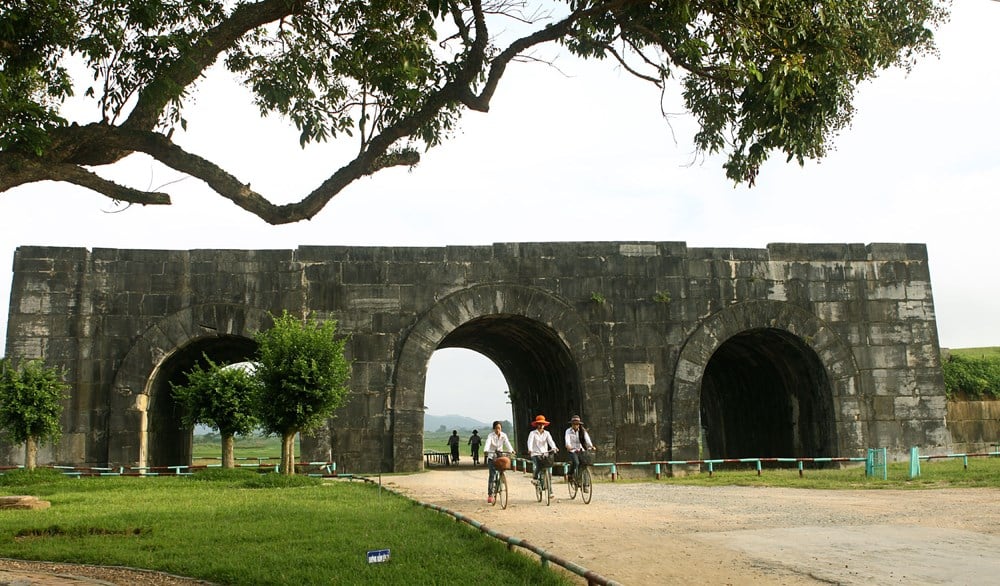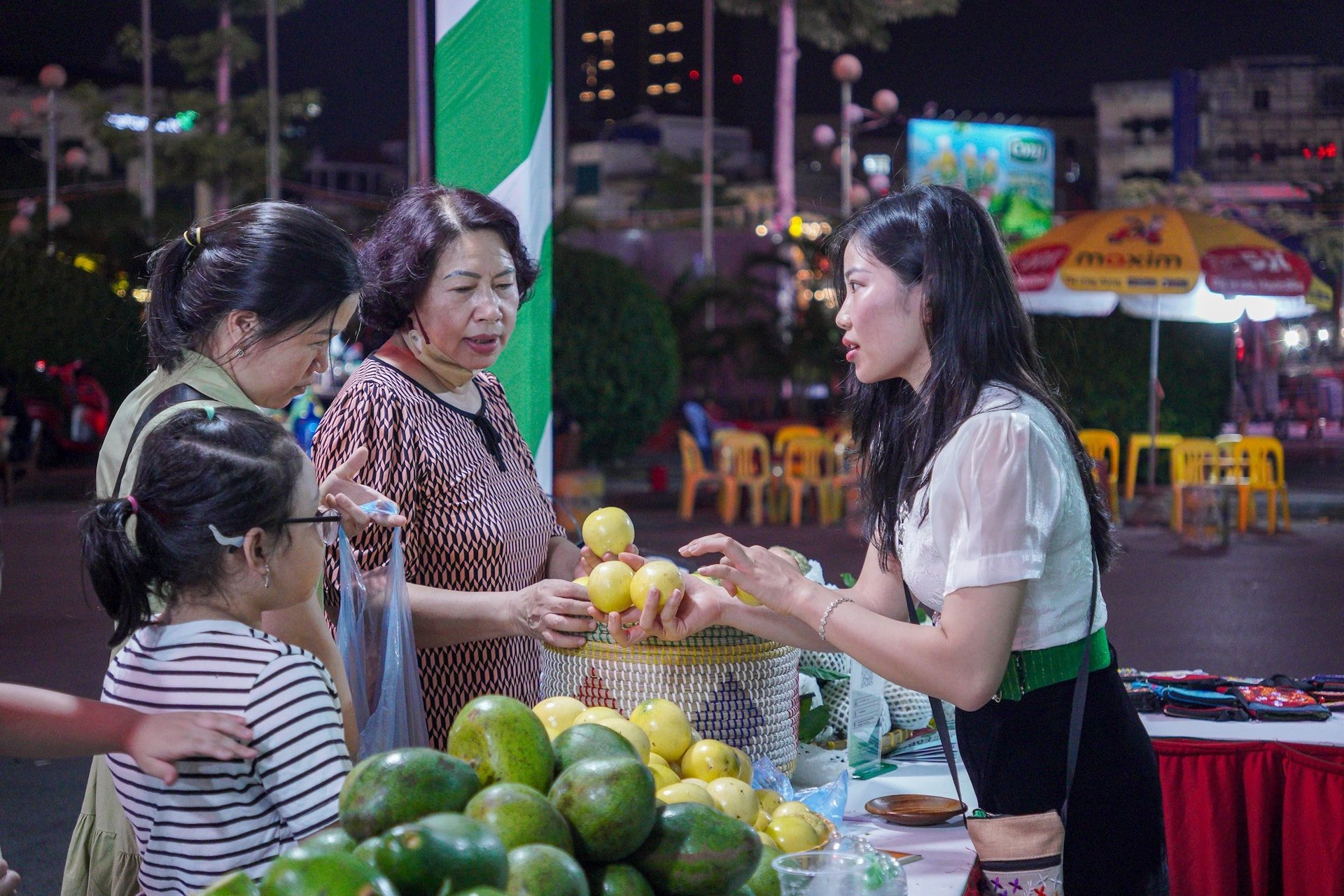The profession is the name of the village.
Lo Village has about 1,500 households living there. The name "Lo Village" comes from the history of the traditional occupation that has been closely associated with the fishermen here. According to Ms. Huynh Thi Chin (66 years old), who has been with the village for more than 46 years, the village used to have many kilns. People lived by fishing, so they had to build kilns to steam and dry fish to preserve them longer. Every 3-4 households contributed to building a brick kiln, plastered with mud and straw on the outside to keep the heat well. The fish were caught, mixed with coarse salt and steamed. From here, the fish were sent everywhere.
Lo Village, the famous red tile village in Hoa Hiep Ward, Dak Lak
PHOTO: BINH TRUC
"Now the fishing industry is still there but the kilns are no longer there. Nowadays, with the new preservation method using ice, fish brought to the port are bought by traders so fishermen don't have to dry or steam. This job is very hard so the younger generation is gradually giving up the job," said Ms. Chin.
Houses built in the 1960s in Lo village are still preserved.
PHOTO: TRAN BICH NGAN
Today, the traditional kilns are only in memory, but the name "Kilo Village" still lives on with the villagers and has become a unique feature that cannot be found anywhere else. Visitors from many provinces flock here not only to swim in the sea but also to find what remains of an ancient fishing village.
Typical scene of a coastal fishing village, bustling with boats
PHOTO: BINH TRUC
One of the highlights that attracts tourists is the house built from 1961 to 1969, with an L-shaped 2-room architecture, yellow walls, and red tiled roof. Through many stormy seasons, the red tiles have turned mossy, the yellow lime walls have faded with the sea breeze, the cracks on the wall showing signs of damage are vivid evidence of the stormy seasons that have passed. The house is not only a place to live, but also a museum of memories in the middle of the village.
From craft village to tourist destination
Along the small path in the village, which has now been built up nicely, there are still rows of green coconut trees and areca trees, and low walls hugging the village path. Life here flows slowly, gently with the sound of waves, enough to soothe the souls of those who come back from the crowded city.
From a fishing village, Lo village is gradually transforming into a tourist destination.
PHOTO: HUU TU
Lo Village has a long straight beach, the sand here is round and deep yellow.
PHOTO: HUU TU
One factor that makes Lo village special in the eyes of tourists is its rare sandy beach. Not the fine white sand like Long Thuy beach (Binh Kien ward) or Vinh Hoa beach (Song Cau ward), Lo village's sand is a type of volcanic sand with large, round, fine grains, a characteristic red-yellow color, only found scattered along the route from Quy Nhon ( Gia Lai ) to Nha Trang (Khanh Hoa).
The small path in the village has now been built spaciously, there are still rows of green coconut trees, rows of areca trees, low walls hugging the village path.
PHOTO: TRAN BICH NGAN
Mr. Huynh Nguyen Ngoc Giang, Chairman of Hoa Hiep Ward People's Committee, said: "In 2023, the old Dong Hoa Town implemented a project to develop community tourism in Lo village. A number of homestays and small beach cafes have sprung up to meet the experience needs of visitors from afar."
From a fishing village, Lo village is gradually changing. Homestays are springing up, modern houses are gradually replacing old houses, red tile roofs are also gradually disappearing. Fishermen in this area are also gradually adapting to a new field - community tourism.
L-shaped house architecture is popular with red tiled roofs and yellow painted walls in Lo village.
PHOTO: TRAN BICH NGAN
Despite many changes, the traditional houses are still there, the memories are still present in the stories of the villagers, from the elderly to the young, who still remember and talk about the name "Lo village". That is the reason why many people come and want to return, not only because of the beautiful sea, but because the village is beautiful in the true sense of life, sincere and quiet. (to be continued)
Peaceful scene in Lo village, a village that still retains many old features
PHOTO: TRAN BICH NGAN
From a craft village, Lo village has now become an attractive tourist destination thanks to its preservation of its ancient features.
PHOTO: TRAN BICH NGAN
Source: https://thanhnien.vn/nhung-ngoi-lang-tuyet-dep-ven-bien-lang-lo-trong-ky-uc-18525081021231024.htm











































































































Comment (0)